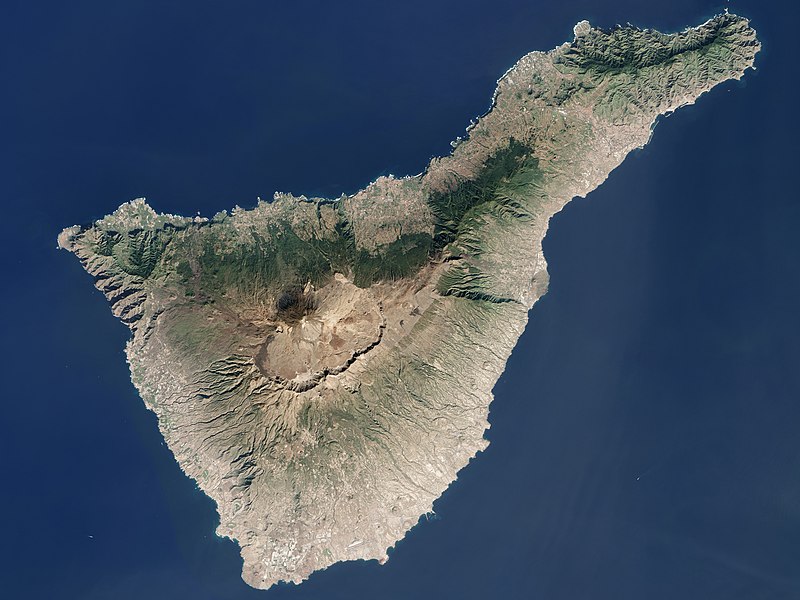ფაილი:Tenerife, Canary Islands.jpeg

ზომა წინასწარი გადახედვისას: 800 × 600 პიქსელი. სხვა გაფართოება: 320 × 240 პიქსელი | 640 × 480 პიქსელი | 1 024 × 768 პიქსელი | 1 280 × 960 პიქსელი | 2 560 × 1 920 პიქსელი | 6 000 × 4 500 პიქსელი.
თავდაპირველი ფაილი ((6 000 × 4 500 პიქსელი, ფაილის ზომა: 3,8 მბ, MIME ტიპი: image/jpeg))
ფაილის ისტორია
დააწკაპუნეთ თარიღზე/დროზე ფაილის დასათვალიერებლად, როგორც ის მაშინ გამოიყურებოდა.
| თარიღი/დრო | მინიატიურა | ზომები | მომხმარებელი | შენიშვნა | |
|---|---|---|---|---|---|
| მიმდინარე | 05:13, 12 მარტი 2021 |  | 6 000×4 500 (3,8 მბ) | StellarHalo | {{Information |Description=Detailed imagery can reveal components of the volcanism that helped shape Tenerife, the largest of Spain’s Canary Islands. But the wide view paints a more robust picture. The Operational Land Imager (OLI) on Landsat 8 acquired this image of Tenerife in its entirety on January 25, 2016. From summit to sea, you can see the transition between the caldera, the tree line, and the populated coastal areas. The summit of the Teide stratovolcano reaches 3,718 meters (12,198... |
ბმულები
ეს ფაილი არცერთ გვერდზე არ გამოიყენება.
ფაილის გლობალური გამოყენება
ეს ფაილი გამოიყენება შემდეგ ვიკებში:


